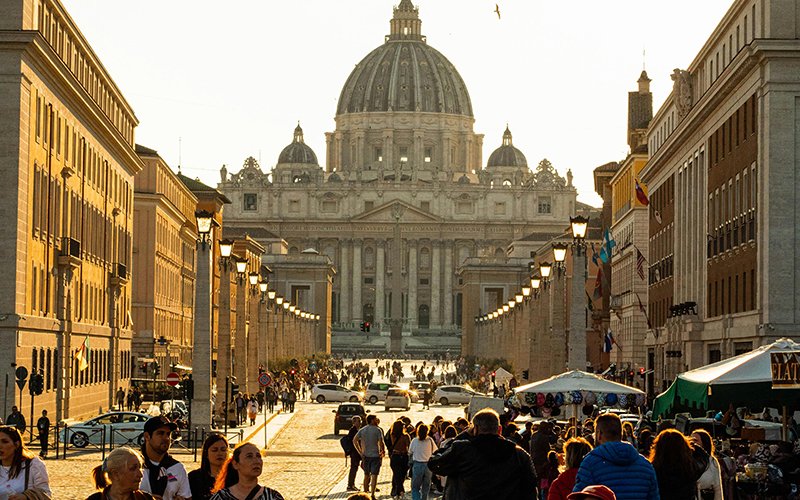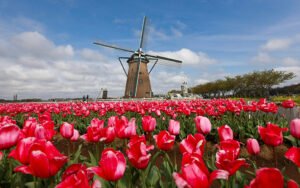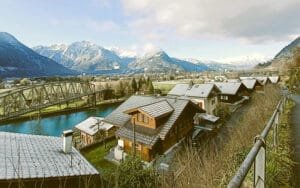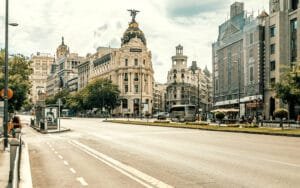Discover the Best City Breaks in Europe. City breaks are the ultimate way to escape the routine and immerse yourself in a world of culture, adventure, and relaxation—all in just a few days. Whether you’re dreaming of wandering through historic streets, savouring local cuisine, or diving into vibrant festivals, Europe offers a wealth of destinations perfect for a quick getaway. From romantic escapes to family-friendly adventures, this guide will help you find the best city breaks in Europe for 2025. Let’s explore what makes these cities so special and why they deserve a spot on your travel list.
Accessibility
One of the key factors in choosing a city break is accessibility. Whether you’re planning a quick weekend getaway or a longer escape, getting to your destination with ease can make all the difference. In this section, we’ll explore how accessible some of Europe’s top destinations are, focusing on transport options and convenience.
Air Travel: Direct Flights and Budget Airlines
For many travellers, air travel is the most convenient way to reach European cities. Cities like Barcelona, Amsterdam, and Vienna are major hubs with numerous direct flights from international airports worldwide. Low-cost carriers such as Ryanair and EasyJet make it even easier to plan affordable city breaks, especially for those flying from within Europe.
Rail Connections: Exploring Europe by Train
Europe is renowned for its extensive and efficient rail network, making it an excellent option for city breaks. High-speed trains like the Eurostar and Thalys connect cities such as London, Paris, and Brussels in just a few hours. For travellers looking to reduce their carbon footprint, train travel offers a sustainable and scenic alternative to flying.
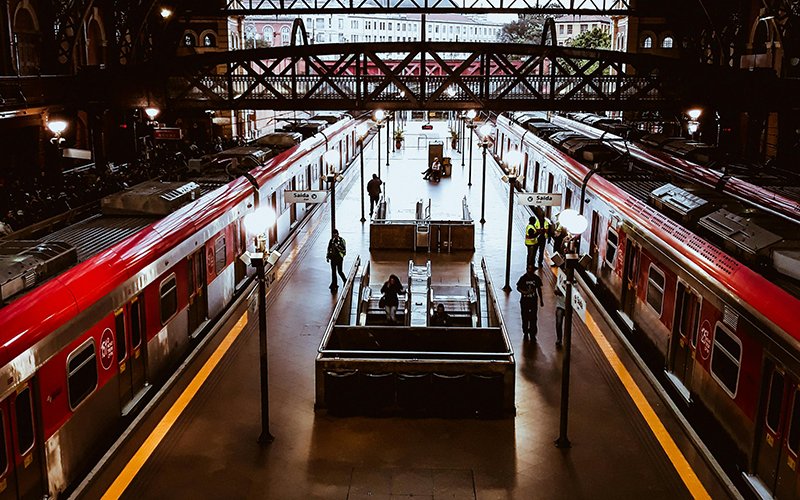
Local Public Transport: Getting Around with Ease
Once you’ve arrived, an accessible and efficient local transport system can enhance your experience. Cities like Copenhagen and Berlin boast comprehensive public transport networks, including buses, trams, and metro systems that make navigating the city a breeze. On the other hand, compact cities like Ljubljana and Dubrovnik are best explored on foot.
Driving and Parking: For the Road Trip Enthusiasts
For those who prefer the flexibility of driving, cities such as Florence and Prague are reachable by well-maintained highways. However, keep in mind that parking in city centers can be expensive or limited, so planning ahead is essential. Consider park-and-ride options where available.
Accessibility for All Travellers
When planning city breaks, it’s important to consider accessibility for all travellers, including those with limited mobility. Many cities, such as Stockholm and Barcelona, are known for their wheelchair-friendly infrastructure, with accessible public transport and attractions.
Effortless accessibility is what makes a great city break truly stress-free. Whether you’re flying in, hopping on a train, or navigating public transport, European cities cater to a variety of travel preferences, ensuring your journey starts and ends on a high note.
Affordability
Affordability plays a crucial role when planning city breaks, especially for budget-conscious travellers. From finding cost-effective accommodations to enjoying local cuisine without overspending, there are plenty of ways to make your city break enjoyable without breaking the bank. Below, we’ll explore the most affordable European destinations and offer tips for saving money during your trip.
Budget-Friendly Cities for City Breaks
Europe is home to several cities where you can enjoy a fantastic break without high costs. Cities like Budapest, Kraków, and Porto consistently rank as some of the most affordable city break destinations. You can find reasonably priced accommodations, meals, and activities, all while experiencing the charm and culture these places have to offer.
Cost of Accommodations
One of the biggest expenses during city breaks is accommodation. Budget travellers can find affordable options in many cities by exploring hostels, guesthouses, or short-term rental apartments. For example:
- In Budapest, boutique hostels and budget hotels start at very reasonable prices.
- Lisbon offers a mix of inexpensive Airbnb options and charming guesthouses in the city center.
Booking in advance, especially during peak seasons, can help secure the best deals.
Affordable Dining Options
Dining out during city breaks doesn’t have to be expensive. Many European cities offer fantastic street food scenes or affordable local eateries:
- In Berlin, enjoy currywurst or döner kebabs for just a few euros.
- Kraków’s milk bars (bar mleczny) serve hearty, traditional Polish meals at incredibly low prices.
- Porto is famous for its inexpensive yet delicious Francesinha sandwiches and local wines.
To save even more, consider exploring local markets where you can sample fresh, authentic flavors.
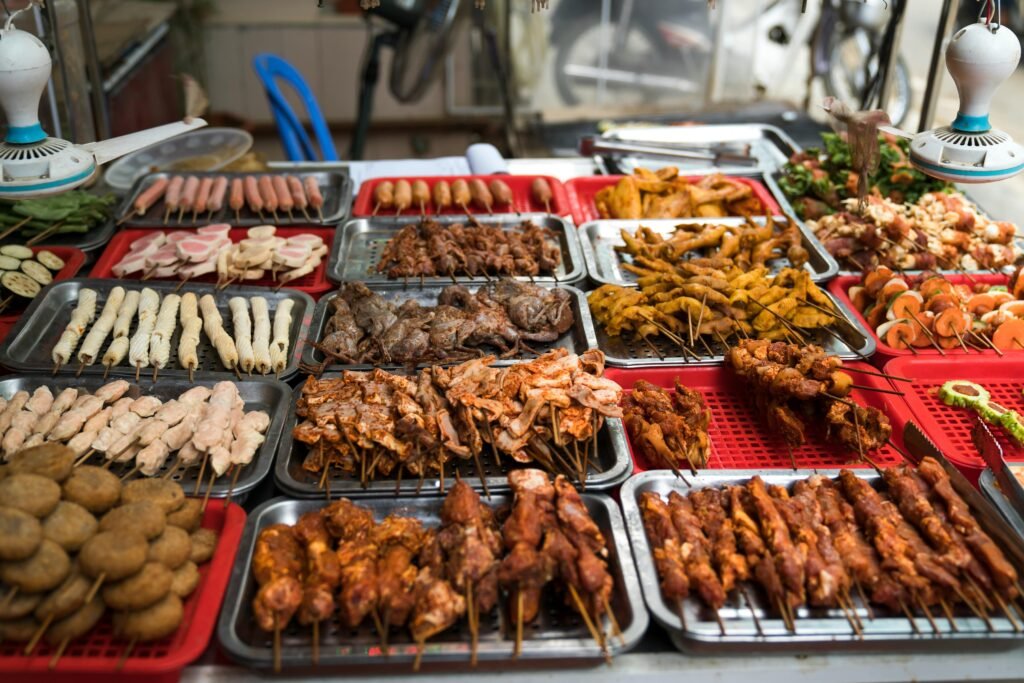
Free or Low-Cost Activities
Many European cities offer a variety of free or inexpensive activities to enjoy:
- Strolling along the Danube in Budapest or the Seine in Paris costs nothing but offers stunning views.
- Museums in cities like London and Amsterdam often have free entry days or discounted tickets.
- Public parks, historical neighborhoods, and scenic lookouts, like Ljubljana’s Castle, are perfect for budget-friendly exploration.
Transportation Savings
Affordable city breaks are often enhanced by budget-friendly transportation options. Cities like Prague and Madrid offer affordable public transport passes that let you explore the entire city for a small fee. Walking and cycling are also great ways to save while soaking in the sights.
Read more about Madrid here.
Tips for Budget Travel on City Breaks
- Travel Off-Peak: Visiting during shoulder seasons (spring or autumn) can significantly reduce costs for flights and accommodations.
- Use Discount Cards: Many cities offer tourist cards that bundle public transport with discounted or free entry to attractions.
- Shop Local: Instead of dining in tourist hotspots, explore neighborhoods where locals eat for better prices and authentic food.
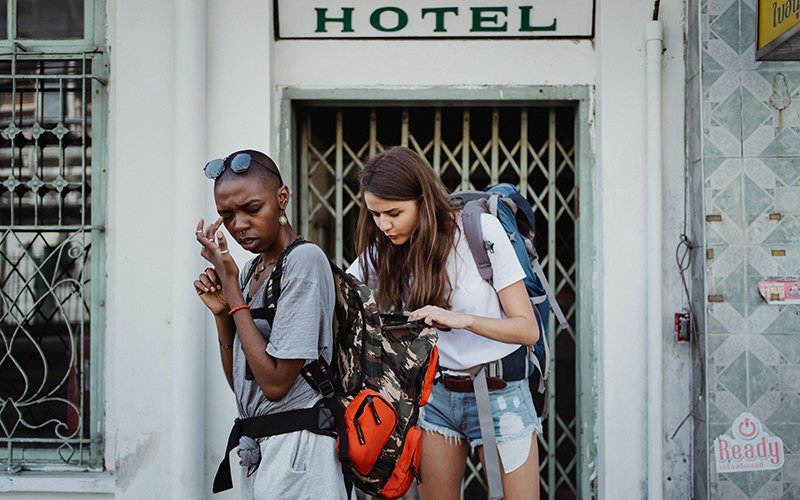
Affordability doesn’t mean sacrificing quality on your city breaks. By choosing budget-friendly destinations, exploring local options, and planning smartly, you can create a memorable trip that fits your budget perfectly. Europe is filled with opportunities for affordable adventures—start planning your next city break today!
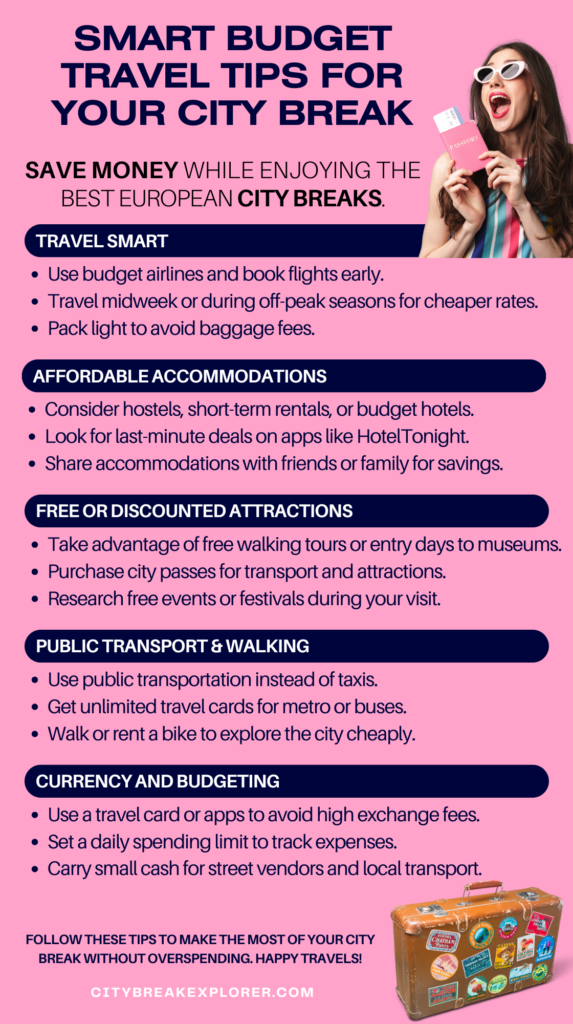
Cultural Experiences
One of the most enriching aspects of city breaks is the opportunity to immerse yourself in a city’s unique culture. Europe’s cities are brimming with history, art, music, and traditions that make each destination special. Whether you’re visiting world-famous museums or attending local festivals, cultural experiences are what truly define unforgettable city breaks.
Many European cities are home to some of the best museums and art galleries in the world. In Paris, the Louvre showcases iconic works like the Mona Lisa, while the Musée d’Orsay celebrates Impressionist art. Florence, the cradle of the Renaissance, offers treasures such as Michelangelo’s David at the Accademia Gallery. Amsterdam, on the other hand, is a haven for art lovers, with the Van Gogh Museum and the Rijksmuseum drawing millions of visitors annually.
Europe’s cities are a tapestry of architectural wonders that tell stories of centuries past. Rome’s Colosseum and Forum transport visitors back to the grandeur of the Roman Empire. In Prague, the medieval Old Town, complete with the Astronomical Clock and Charles Bridge, creates a fairytale-like atmosphere. Meanwhile, Vienna impresses with its baroque palaces and opulent opera houses, showcasing a rich blend of history and artistic splendor.
Music and performing arts are integral to the cultural identity of many European cities. Vienna, known as the city of Mozart and Beethoven, offers classical concerts in stunning venues. London’s West End is a must-visit for theater enthusiasts, showcasing world-class performances. In Seville, Spain, the passion of flamenco dancing and music creates an unforgettable cultural experience.
Local festivals bring a unique vibrancy to city breaks. Venice’s Carnival dazzles visitors with intricate costumes and masks, creating a magical atmosphere. Munich’s Oktoberfest combines Bavarian traditions with lively beer gardens, attracting travellers from around the globe. For fans of comedy and performing arts, Edinburgh’s Fringe Festival is an unparalleled experience that brings the city alive with creative energy.
Cultural experiences go beyond sights and sounds—they are also about taste. In Barcelona, savouring Catalan dishes like paella and tapas is an essential part of the experience. Kraków offers a delicious introduction to Polish flavors with its pierogi, while Naples is the birthplace of authentic Neapolitan pizza, a treat no visitor should miss.
Immersive experiences with locals provide another layer of cultural connection. Taking a pasta-making class in Rome or a wine-tasting tour in Bordeaux offers an authentic taste of local life. In Istanbul, exploring bazaars and mosques with a local guide provides insight into the city’s rich traditions. For a quintessentially British experience, attending a traditional tea ceremony in London is a delightful way to connect with the culture.
Europe’s cities are also home to awe-inspiring religious landmarks. Barcelona’s Sagrada Família, designed by Gaudí, is an architectural masterpiece that draws millions of visitors each year. Istanbul’s Hagia Sophia blends Byzantine and Islamic influences, offering a spiritual and cultural experience like no other. Paris’ Notre-Dame Cathedral, despite ongoing restoration, remains a symbol of Gothic elegance and resilience.
For those who appreciate modern culture, exploring vibrant street art scenes can be equally rewarding. Berlin’s East Side Gallery, with its colorful murals on the remnants of the Berlin Wall, is a striking testament to the city’s history and creativity. Bristol in the UK is known as the birthplace of the enigmatic artist Banksy, while Lisbon’s narrow alleys are adorned with bold and beautiful urban art.
Cultural experiences are the soul of city breaks, giving you a deeper connection to the destinations you visit. Whether you’re exploring iconic landmarks, savouring local cuisines, or engaging in traditional festivals, every cultural moment enriches your journey. Make your next city break unforgettable by diving into the rich heritage and vibrant life of Europe’s cities.
Food and Drink
Food and drink are at the heart of any memorable city break. European cities offer a diverse range of culinary delights, from authentic local dishes to innovative dining experiences. Exploring the local food scene is not just about satisfying your appetite—it’s an opportunity to connect with the culture and traditions of the destination.
Each city in Europe boasts its own culinary identity. In Bologna, known as the gastronomic capital of Italy, you can indulge in fresh pasta dishes such as tagliatelle al ragù and tortellini in brodo. Barcelona tempts food lovers with its vibrant tapas culture, where small plates of patatas bravas, jamón ibérico, and seafood paella offer an explosion of flavors. For a sweeter experience, Vienna is famous for its classic Sachertorte and coffeehouse culture, where you can relax over a cup of melange paired with a decadent dessert.
Local markets are a fantastic way to explore a city’s food culture. The Mercado de la Boqueria in Barcelona is a sensory feast, offering fresh produce, seafood, and cured meats. Budapest’s Great Market Hall combines culinary delights with stunning architecture, where you can sample traditional Hungarian goulash and chimney cakes. Visiting these markets allows you to experience the hustle and bustle of local life while discovering regional specialties.
Read more on Barcelona here.
For wine and beer enthusiasts, city breaks offer plenty of opportunities to sip on local beverages. Porto is renowned for its port wine, best enjoyed during a tour of the city’s historic cellars along the Douro River. In Brussels, beer lovers can explore a rich tradition of brewing, from classic Trappist ales to innovative craft beers. Vienna also stands out with its Heuriger wine taverns, where you can taste locally produced wines in a relaxed and cozy setting.
Street food is another highlight of many European cities. Berlin’s currywurst, a spiced sausage served with ketchup and curry powder, is a beloved fast food that reflects the city’s multicultural spirit. Istanbul’s bustling streets are lined with vendors selling simit (a sesame-crusted bread ring) and freshly squeezed pomegranate juice. Meanwhile, Kraków’s obwarzanek, a type of soft pretzel, is a must-try snack as you wander through the city’s historic streets.
Fine dining options elevate the food and drink experience during city breaks. Paris offers world-class restaurants that pair haute cuisine with stunning views of iconic landmarks. In Copenhagen, the rise of New Nordic Cuisine has placed the city on the global culinary map, with restaurants like Noma redefining what it means to eat sustainably and innovatively. For a more relaxed yet refined experience, Lisbon’s riverside eateries serve fresh seafood dishes alongside picturesque views.
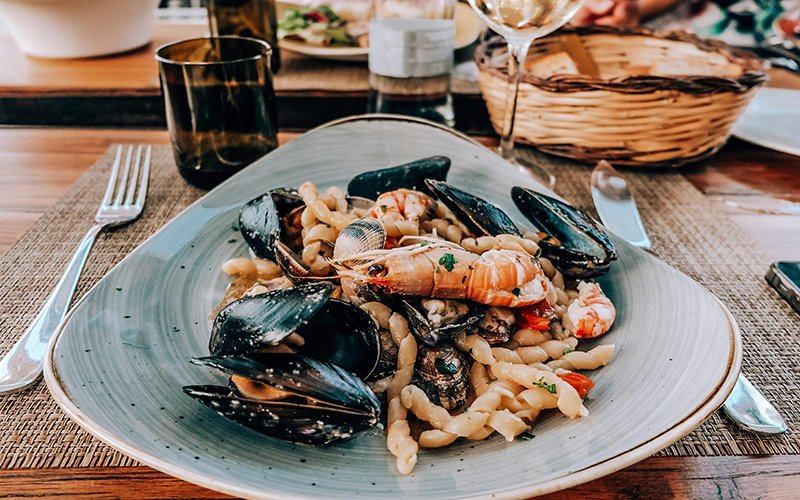
Food festivals are another way to enhance your culinary exploration during city breaks. The San Sebastián Gastronomika in Spain is a celebration of Basque cuisine, attracting food lovers and chefs from around the globe. Oktoberfest in Munich is the ultimate destination for those seeking Bavarian beer, hearty pretzels, and traditional sausages. These events provide an immersive experience, combining local flavors with vibrant celebrations.
Food and drink are essential elements of any city break, offering a delicious way to explore a destination’s culture. Whether you’re sampling street food, dining in a Michelin-starred restaurant, or enjoying a glass of local wine, the culinary journey is as rewarding as the sights you see. Let your taste buds guide you on your next adventure.
Accommodation Options
Choosing the right place to stay is a key part of planning the perfect city break. With a wide range of options available, from luxurious hotels to budget-friendly hostels, your accommodation can significantly shape your overall experience. Whether you’re looking for convenience, comfort, or a unique stay, there’s something for every traveler in Europe’s most popular city break destinations.
Hotels are often the go-to choice for many city break travellers, offering convenience and comfort. Major cities like Paris, Rome, and Vienna are home to a wide range of hotels, from budget chains to five-star establishments. Staying in the city center not only provides easy access to major attractions but also places you in the heart of the action, allowing you to soak in the atmosphere of the destination. For a luxurious experience, boutique hotels like The Hoxton in Amsterdam or Hotel de Russie in Rome combine modern amenities with distinctive design and exceptional service.
For travellers on a budget, hostels provide affordable yet comfortable options. Many European hostels, such as Generator Hostels in cities like Barcelona and Berlin, are modern, clean, and often include amenities like free Wi-Fi and social areas. Hostels are also a great way to meet fellow travellers, making them particularly popular among solo adventurers and young explorers.
Short-term rentals, like those offered through Airbnb, are an increasingly popular choice for city breaks. These accommodations range from cozy apartments in historic neighborhoods to modern lofts with stunning city views. Staying in a rental gives you a more home-like experience, with the added benefit of having a kitchen to prepare meals, saving money on dining out. Cities like Lisbon, Prague, and Budapest are known for their affordable and charming rental options.
For those seeking a unique or memorable stay, Europe offers plenty of quirky and alternative accommodations. In Stockholm, the Jumbo Stay offers a night in a converted airplane, while in Florence, you can stay in a historic palazzo turned boutique hotel. These unconventional options provide a one-of-a-kind experience that adds an extra layer of excitement to your city break.
If you’re traveling with family or a group, serviced apartments and family-friendly hotels offer spacious and practical solutions. Accommodations like Citadines Apart’hotels in cities such as London and Paris provide kitchenettes, laundry facilities, and extra living space, ensuring a comfortable stay for everyone. Family-friendly hotels also often include kid-friendly amenities such as play areas, babysitting services, and special menus.
No matter your preferences or budget, Europe’s cities offer a variety of accommodation options to suit your needs. From high-end hotels and charming short-term rentals to affordable hostels and unique stays, where you choose to rest your head can greatly enhance your city break experience. Take the time to research and select the perfect accommodation to make your trip truly unforgettable.
Activities and Attractions
A well-planned city break is all about immersing yourself in the best activities and attractions that a destination has to offer. Europe’s cities are brimming with iconic landmarks, hidden gems, and unique experiences that cater to all interests, making your city breaks unforgettable.
One of the highlights of any city break is exploring iconic landmarks. Cities like Paris, Rome, and London are home to some of the world’s most famous attractions. In Paris, the Eiffel Tower offers breathtaking views of the city, while the Louvre captivates art lovers with masterpieces like the Mona Lisa. Rome’s Colosseum stands as a testament to the grandeur of the Roman Empire, while London’s Tower Bridge and Buckingham Palace are must-see stops for history enthusiasts.
For those who enjoy uncovering hidden gems, Europe’s cities have no shortage of lesser-known yet equally enchanting spots. In Barcelona, the whimsical Park Güell designed by Antoni Gaudí provides a colorful escape from the bustling city. Lisbon’s Alfama district, with its winding streets and authentic fado music venues, offers a glimpse into the city’s soul. In Kraków, the Kazimierz district combines history and vibrant modern culture, with unique shops, galleries, and cafés to explore.
Museums and galleries are essential stops on a city break for anyone interested in art, history, or culture. Amsterdam’s Rijksmuseum and Van Gogh Museum are world-renowned, while Florence’s Uffizi Gallery houses one of the most important collections of Renaissance art. Berlin’s Museum Island is a treasure trove of history, with five museums showcasing everything from ancient artifacts to 19th-century masterpieces.
Outdoor activities add an adventurous element to city breaks. Many cities feature stunning parks and gardens where you can relax or enjoy a leisurely stroll. Hyde Park in London and the Jardins du Luxembourg in Paris are peaceful retreats from urban life. For a more active experience, hiking up Arthur’s Seat in Edinburgh provides panoramic views of the city and beyond.
If you’re traveling with family, many European cities offer attractions suitable for all ages. Disneyland Paris is a magical destination for kids and adults alike, while cities like Copenhagen feature interactive museums such as the Experimentarium. In Berlin, the Berlin Zoo and Tiergarten are perfect spots for a family outing.
Evening activities are another key part of city breaks, especially for those who enjoy nightlife or cultural events. Vienna’s opera houses offer world-class performances, while Prague’s jazz clubs provide an intimate setting for live music. For night owls, Berlin’s legendary club scene promises an unforgettable experience.
Activities and attractions are the heart of city breaks, offering endless opportunities for exploration, relaxation, and adventure. From world-famous landmarks to unique local experiences, every city has something special to discover. Plan your itinerary thoughtfully to make the most of your time and create lasting memories.
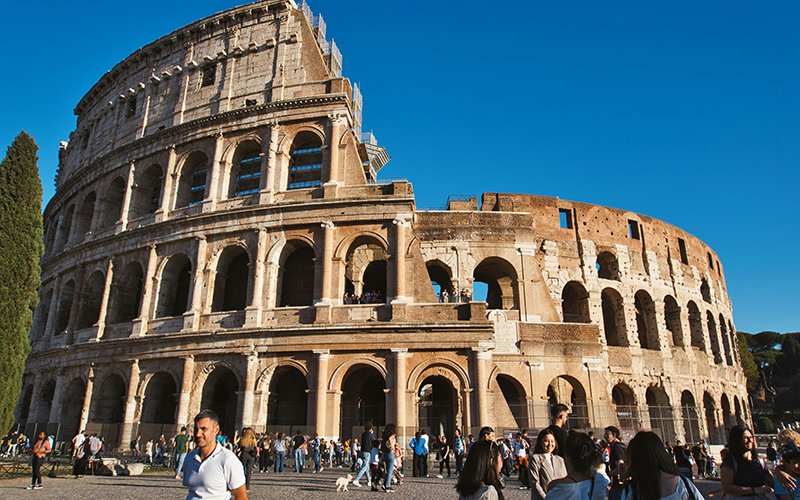
Weather and Best Travel Seasons
Understanding the weather and choosing the best travel seasons are essential when planning city breaks. Europe’s diverse climate means each city offers something unique depending on the time of year. Whether you prefer sunny strolls, festive winter markets, or mild spring mornings, aligning your visit with the right season can enhance your experience.
Spring (March to May) is one of the best times for city breaks, offering pleasant weather and blooming landscapes. Cities like Amsterdam and Paris are particularly beautiful in spring, with tulip fields and cherry blossoms creating picturesque scenes. Spring is also ideal for exploring outdoor attractions, such as gardens and parks, without the crowds of peak summer. This season is great for strolling through London’s Hyde Park or wandering the cobblestone streets of Lisbon in comfortable, mild weather.
Summer (June to August) is the busiest time for city breaks, as warm weather and long days attract travellers to Europe’s iconic cities. Destinations like Barcelona, Rome, and Dubrovnik are at their liveliest, offering vibrant street festivals, beach access, and plenty of outdoor dining. However, summer is also peak season, which means higher prices and larger crowds. It’s a fantastic time for city breaks if you enjoy a bustling atmosphere and don’t mind the heat.
Autumn (September to November) is a wonderful time to explore Europe’s cities, as the summer crowds thin out and the weather remains mild. Cities like Prague, Vienna, and Florence take on a magical ambiance with golden leaves and crisp air. Autumn is also a great season for food lovers, with many cities hosting harvest festivals and wine events. Exploring museums and historical sites is especially enjoyable during this quieter time.
Winter (December to February) transforms many European cities into winter wonderlands. Christmas markets, such as those in Vienna, Munich, and Strasbourg, are a major draw for city breaks during the holiday season. Snow-covered streets in cities like Salzburg and Kraków create a fairy tale atmosphere, perfect for cozy escapes. For travellers seeking fewer crowds and lower prices, winter also offers excellent opportunities to explore iconic landmarks like the Eiffel Tower or the Colosseum with shorter queues.
Choosing the right season for your city break depends on your preferences for weather, activities, and crowd levels. Whether you’re seeking the energy of summer, the charm of winter, or the tranquility of spring and autumn, every season has something unique to offer in Europe’s cities. Plan wisely to match your trip with the seasonal atmosphere that best suits your travel goals.
City Atmosphere and Vibes
The atmosphere and vibe of a destination often define the overall experience of a city break. Each European city offers a distinct personality, influenced by its culture, history, and daily rhythm. Whether you’re drawn to lively metropolises or tranquil hideaways, choosing a city that matches your preferences can make your trip truly memorable.
Some cities are known for their energetic and vibrant atmosphere. Barcelona, for example, is a city alive with color and movement, from bustling markets like La Boqueria to the vibrant street performers on La Rambla. Similarly, Berlin exudes a dynamic energy, blending its rich history with a cutting-edge arts and music scene. These cities are perfect for travellers who love to immerse themselves in a fast-paced, creative environment.
On the other hand, cities like Bruges and Ljubljana offer a more relaxed, peaceful vibe. Bruges enchants visitors with its serene canals, cobblestone streets, and historic charm, while Ljubljana is celebrated for its green spaces, riverside cafés, and laid-back ambiance. These destinations are ideal for those seeking tranquility and a slower pace of life during their city breaks.
Romantic cities like Paris, Venice, and Prague create an entirely different kind of atmosphere. Paris radiates elegance with its tree-lined boulevards, iconic landmarks, and candlelit bistros. Venice enchants with its gondola rides through quiet canals, while Prague’s medieval streets and stunning sunsets over the Charles Bridge evoke a fairytale-like mood. These cities are perfect for couples or travellers looking for a dreamy escape.
For nightlife enthusiasts, cities like Amsterdam and Madrid come alive after dark. Amsterdam’s canal-side bars and vibrant club scene offer a unique nighttime experience, while Madrid’s tapas culture and late-night dining create an infectious energy. These destinations are perfect for travellers who want their city break to extend well into the evening hours.
Read more about Madrid here.
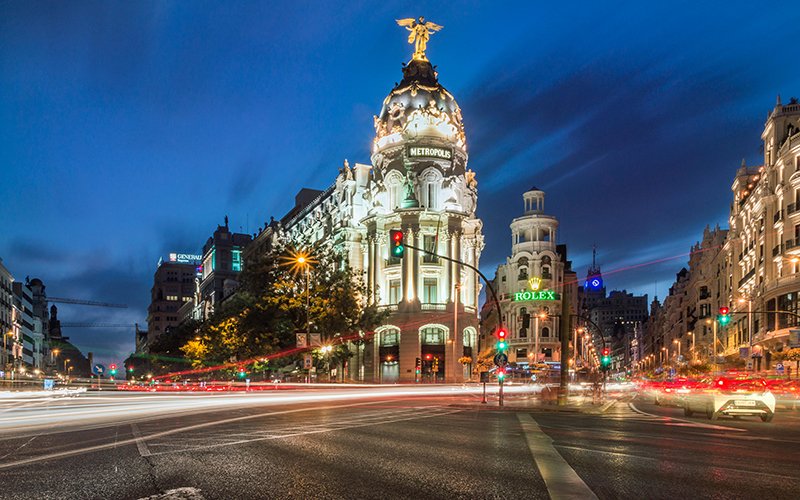
Cities with a strong cultural or historical identity, such as Rome and Istanbul, offer an immersive experience that blends past and present. Rome’s ancient ruins coexist with lively piazzas and bustling cafés, creating a timeless yet lively atmosphere. Istanbul’s unique position between Europe and Asia infuses the city with a fascinating mix of cultures, sounds, and aromas that make it truly unforgettable.
The atmosphere and vibe of a city are as much a part of the experience as its landmarks and activities. Whether you’re seeking excitement, serenity, romance, or culture, Europe’s cities offer a wide range of atmospheres to suit every type of traveler. Choose a destination that resonates with your travel style, and let the city’s unique energy shape your unforgettable city break.
Sustainability and Eco-Friendliness
As travellers increasingly prioritize sustainability, choosing eco-friendly destinations for city breaks has become more important than ever. Many European cities are leading the way in green initiatives, offering visitors opportunities to enjoy their stay while minimizing their environmental impact. From sustainable transportation to eco-conscious accommodations, there are plenty of ways to make your city break both enjoyable and planet-friendly.
Several cities in Europe have earned a reputation for their commitment to sustainability. Copenhagen, often referred to as one of the greenest cities in the world, boasts an extensive cycling infrastructure, allowing travellers to explore the city on two wheels. The city’s emphasis on renewable energy and clean waterways further enhances its eco-friendly appeal. Amsterdam is another cyclist’s paradise, with bike-friendly paths and policies that encourage sustainable urban living.
Public transportation is a cornerstone of eco-friendly travel, and many cities offer efficient systems that make it easy to get around without a car. Berlin’s public transit network, which includes buses, trams, and trains, is not only efficient but also powered in part by renewable energy. Similarly, Zurich combines scenic views with sustainability by operating one of Europe’s most reliable and environmentally conscious transport systems. Choosing public transport or walking allows you to experience the city while reducing your carbon footprint.
Eco-conscious accommodations are another essential element of a sustainable city break. Many hotels across Europe are adopting green practices such as using renewable energy, reducing waste, and sourcing locally produced goods. In Stockholm, numerous hotels are certified by the Nordic Swan Ecolabel, which ensures high environmental standards. Lisbon also offers a growing number of sustainable short-term rental options that align with green travel values. When booking, look for accommodations with eco-certifications or a clear commitment to sustainable practices.
Green spaces within cities provide not only a place to relax but also a way to support urban biodiversity. Cities like Vienna and Helsinki are known for their well-maintained parks and public gardens. Vienna’s Stadtpark and Helsinki’s Central Park are perfect examples of how urban spaces can integrate nature into city life, offering locals and visitors a chance to unwind in eco-friendly environments.
For dining, many cities feature restaurants that prioritize local, organic, and seasonal ingredients. In Copenhagen, the New Nordic Cuisine movement champions sustainability by focusing on regional produce and innovative food preparation techniques. Berlin is home to a growing number of zero-waste restaurants and vegan cafés, catering to eco-conscious food lovers. Exploring these dining options supports local farmers and reduces the environmental impact of your meals.
Sustainability and eco-friendliness are becoming integral to city breaks, allowing travellers to enjoy urban experiences while caring for the environment. By choosing destinations that prioritize green initiatives, using public transport or cycling, and supporting eco-conscious businesses, you can ensure your trip leaves a positive impact. Make your next city break not only memorable but also meaningful by embracing sustainable travel practices.
Romantic Appeal
Romance is often at the heart of the best city breaks, with Europe offering some of the most enchanting destinations for couples. From candlelit dinners in historic settings to scenic strolls along picturesque streets, these cities provide the perfect backdrop for creating unforgettable memories with your loved one.
Paris, often dubbed the “City of Love,” is an iconic destination for romance. Couples can enjoy leisurely walks along the Seine, explore the charming streets of Montmartre, or share a kiss at the top of the Eiffel Tower. The city’s intimate cafés and world-class restaurants set the stage for romantic dining experiences, making Paris a timeless choice for city breaks with romantic appeal.
Venice is another top contender, with its labyrinth of canals, historic bridges, and gondola rides. There’s something undeniably magical about gliding through the city’s waterways at sunset or enjoying a private moment in St. Mark’s Square. Venice’s unique charm and tranquil beauty make it a haven for romance-seekers.
Prague’s fairytale-like atmosphere is perfect for couples looking to escape into a world of medieval architecture and cobblestone streets. The iconic Charles Bridge, especially during sunrise or sunset, offers breathtaking views of the city and the Vltava River. A visit to Prague Castle or a cozy evening in one of the city’s charming wine bars adds to the romantic allure.
For those who enjoy coastal romance, Dubrovnik offers stunning sea views and historic charm. Wandering the ancient city walls hand in hand or sharing a meal by the Adriatic Sea makes for an unforgettable experience. Similarly, Santorini’s iconic white-washed buildings and brilliant sunsets create an idyllic setting for romance, with couples flocking to Oia to witness the breathtaking evening sky.
Cities with vibrant arts and culture scenes also hold great romantic appeal. Vienna’s elegant concert halls, such as the Vienna State Opera, offer magical evenings of classical music, while its horse-drawn carriages provide a dreamy way to explore the city. In Florence, couples can admire Renaissance art together at the Uffizi Gallery or share gelato on the Ponte Vecchio while watching the Arno River reflect the warm glow of the setting sun.
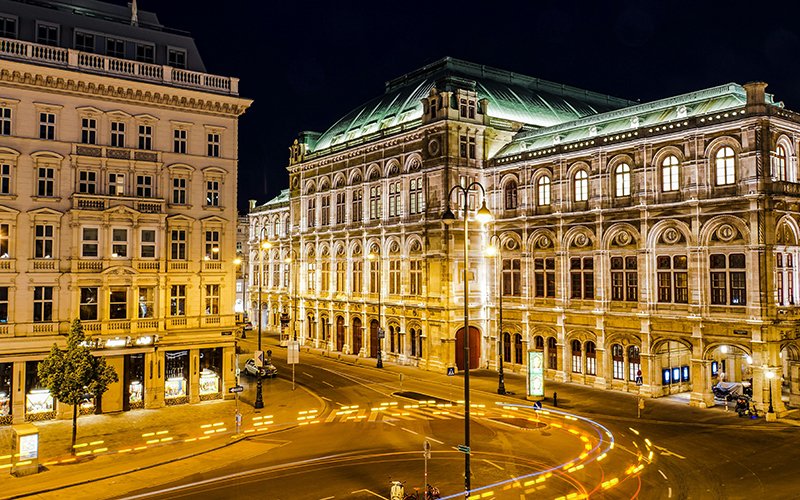
Romantic city breaks are all about finding moments of connection in beautiful surroundings. Whether you’re gazing at iconic landmarks, sharing intimate meals, or simply enjoying each other’s company in a stunning setting, these destinations promise to ignite and celebrate love. Plan your perfect romantic escape to one of Europe’s most captivating cities for a city break that you and your partner will treasure forever.
Family-Friendliness
Planning a family-friendly city break means finding destinations that offer activities and amenities for travellers of all ages. Europe is filled with cities that cater to families, providing a mix of cultural experiences, outdoor adventures, and fun attractions that children and adults can enjoy together. Choosing a family-friendly city ensures your city break is both memorable and stress-free.
Copenhagen is a top choice for families due to its safe, clean streets and abundance of kid-friendly attractions. Tivoli Gardens, one of the world’s oldest amusement parks, offers charming rides, beautiful gardens, and live entertainment that captivate children and adults alike. The city is also home to the Experimentarium, a hands-on science museum perfect for curious young minds. Its excellent public transport system and bike-friendly infrastructure make getting around easy for families.
London is another fantastic option for family-friendly city breaks, offering a wide range of attractions that cater to all interests. The Natural History Museum and the Science Museum provide hours of interactive learning and entertainment. Families can also enjoy a ride on the London Eye for breathtaking views or take a stroll through Hyde Park, where kids can explore the Diana Memorial Playground. With numerous parks, free museums, and a reliable transport network, London is ideal for families.
For a smaller, more relaxed city break, Ljubljana is a hidden gem for families. The compact capital of Slovenia is easy to navigate, and its traffic-free city center allows children to roam safely. The Ljubljana Zoo and the nearby Tivoli Park offer fun outdoor activities, while a boat ride along the Ljubljanica River adds an adventurous twist. The city’s family-friendly restaurants and welcoming atmosphere make it an excellent choice for traveling with kids.
Berlin also shines as a family-friendly destination with its mix of history, green spaces, and unique attractions. The Berlin Zoo is one of the best in Europe, featuring hundreds of animal species and a large playground. Families can explore the sprawling Tiergarten park or visit the German Museum of Technology, which offers interactive exhibits that kids love. Berlin’s efficient public transport system makes exploring the city a breeze, even with little ones in tow.
For those seeking a blend of history and family-friendly fun, Rome provides plenty of opportunities to engage children. The city’s ancient landmarks, such as the Colosseum and the Roman Forum, ignite imaginations with tales of gladiators and emperors. Meanwhile, Piazza Navona and Villa Borghese offer open spaces for kids to play and explore. Gelato stops along the way add a sweet treat to family adventures.
Family-friendly city breaks combine fun, culture, and convenience to create an enjoyable experience for everyone. With a mix of engaging attractions, safe environments, and amenities designed for families, Europe’s cities provide the perfect settings for your next adventure. Whether exploring museums, enjoying parks, or tasting local treats, these destinations ensure a city break filled with smiles and lasting memories.
Adventure Opportunities
For travellers who crave excitement and unique experiences, city breaks in Europe offer a surprising array of adventure opportunities. From outdoor activities to adrenaline-pumping excursions, these cities provide plenty of ways to inject adventure into your urban escape. Whether you’re seeking physical challenges, scenic hikes, or water-based thrills, Europe’s cities deliver adventure alongside their cultural and historical appeal.
Reykjavík, the capital of Iceland, is a dream destination for outdoor enthusiasts. While the city itself is compact and easy to explore, it also serves as a gateway to incredible adventures. Visitors can take day trips to nearby glaciers for snowmobiling, hike volcanic landscapes, or relax in natural hot springs like the Blue Lagoon. The chance to view the Northern Lights during winter adds another layer of adventure to city breaks in Reykjavík.
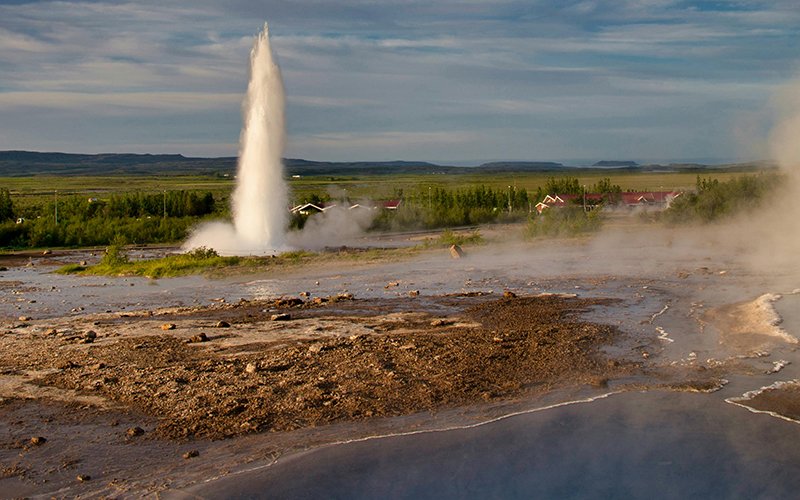
Granada, nestled at the base of Spain’s Sierra Nevada mountains, combines cultural treasures with outdoor exploration. Visitors can hike trails that offer stunning views of the Alhambra and the surrounding valleys or head to the ski slopes during the winter season. The blend of Moorish history and adventure opportunities makes Granada an excellent choice for thrill-seekers who want a mix of culture and activity.
For water-based adventures, Dubrovnik stands out. The city’s dramatic coastline and crystal-clear waters are perfect for kayaking around its ancient walls or exploring nearby islands. Adventurous travellers can also take a diving tour to discover underwater caves and shipwrecks in the Adriatic Sea. With its combination of history, natural beauty, and adrenaline-filled activities, Dubrovnik is ideal for adventurous city breaks.
Innsbruck, Austria, is a haven for mountain lovers. Surrounded by the Alps, the city offers world-class skiing and snowboarding in the winter, while summer brings opportunities for hiking, paragliding, and mountain biking. The Nordkette cable car takes visitors straight from the city center to panoramic viewpoints high in the mountains, making Innsbruck a unique blend of urban and alpine adventure.
For those looking for city-based thrills, Berlin offers unconventional adventures like bungee jumping or exploring the city’s abandoned sites. Urban adventurers can take guided tours of hidden bunkers, climb the Berlin Wall remnants, or kayak along the Spree River. The city’s edgy vibe and variety of activities make it a great destination for offbeat adventures.
Adventure opportunities add an exciting dimension to city breaks, allowing travellers to combine the thrill of exploration with the charm of Europe’s urban centers. Whether you’re seeking high-energy activities or unique ways to experience the outdoors, these cities offer endless possibilities for an action-packed escape.
Historical and Architectural Highlights
City breaks in Europe are a treasure trove of historical and architectural wonders, offering visitors a glimpse into centuries of culture, innovation, and artistry. Whether you’re wandering through ancient ruins, marveling at Gothic cathedrals, or admiring modern architectural masterpieces, these cities bring history to life through their iconic structures and preserved heritage.
Rome is a must-visit destination for anyone interested in historical and architectural highlights. Known as the Eternal City, Rome offers countless landmarks that showcase its storied past. The Colosseum, an enduring symbol of ancient Rome, invites visitors to step back in time and imagine gladiatorial battles. The Roman Forum, once the center of political and social life, provides a fascinating look at the city’s ancient foundations. St. Peter’s Basilica in Vatican City adds another layer of architectural brilliance, blending Renaissance and Baroque styles.
Paris is equally renowned for its architectural diversity and historical significance. The Eiffel Tower is an iconic symbol of modern engineering, while the Gothic splendor of Notre-Dame Cathedral, with its intricate sculptures and stained-glass windows, reflects the city’s medieval heritage. The Palace of Versailles, just outside the city, showcases opulent French Baroque design, making it a must-see for history and architecture enthusiasts.
Prague, often called the “City of a Hundred Spires,” enchants visitors with its well-preserved medieval and Gothic architecture. The Old Town Square, surrounded by colorful baroque buildings, is home to the Astronomical Clock, a masterpiece of medieval craftsmanship. Charles Bridge, adorned with statues and offering stunning views of the Vltava River, is a testament to the city’s rich history.
Istanbul stands out for its unique blend of Byzantine and Ottoman architecture, reflecting its position as a bridge between Europe and Asia. The Hagia Sophia, originally a Byzantine cathedral turned mosque and now a museum, is a marvel of ancient engineering and design. The Blue Mosque, with its striking domes and intricate tilework, is another highlight that captivates visitors.
Barcelona offers a distinct perspective on architectural history, thanks to the genius of Antoni Gaudí. The Sagrada Família, still under construction after more than a century, is a masterpiece of modernist design. Park Güell, with its whimsical mosaics and imaginative structures, showcases Gaudí’s creativity and vision. The city also features Gothic landmarks like the Barcelona Cathedral, adding depth to its architectural appeal.
For those fascinated by medieval history, Tallinn is a hidden gem. Its Old Town is one of the best-preserved medieval cities in Europe, with cobblestone streets, towers, and city walls that transport visitors back in time. Similarly, Edinburgh’s historic Royal Mile, stretching from Edinburgh Castle to the Palace of Holyroodhouse, offers a journey through Scotland’s rich heritage.
Historical and architectural highlights add depth and context to city breaks, offering travellers a chance to connect with the stories and artistry of the past. Whether exploring ancient ruins, marveling at Gothic cathedrals, or enjoying the creativity of modernist design, Europe’s cities provide endless opportunities to discover and admire architectural brilliance.
Local Events and Festivals
One of the most exciting ways to experience a city break is by immersing yourself in local events and festivals. These celebrations offer a unique glimpse into the culture, traditions, and vibrant energy of a destination. Europe’s cities host a wide range of events throughout the year, from lively street festivals to grand cultural gatherings, making city breaks even more memorable.
Venice is renowned for its world-famous Carnival, a spectacular event that transforms the city into a colorful wonderland of masks, costumes, and festivities. Visitors can attend masquerade balls, watch parades along the canals, and enjoy live performances in St. Mark’s Square. The Carnival’s unique blend of history, art, and celebration makes it an unforgettable experience.
Munich’s Oktoberfest is another iconic event that attracts millions of visitors each year. Known as the world’s largest beer festival, Oktoberfest combines traditional Bavarian music, hearty food, and, of course, plenty of beer. The festival grounds are filled with lively tents, amusement rides, and cultural performances, making it a fantastic city break destination for those seeking fun and tradition.
Edinburgh’s Fringe Festival is a must-see for fans of theater, comedy, and performance art. Held every August, the festival showcases thousands of performances from artists around the globe, turning the city into a hub of creativity and energy. Strolling through Edinburgh’s historic streets while discovering pop-up performances and shows adds an extra layer of excitement to this already vibrant city.
For a festive city break in December, visiting the Christmas markets in cities like Vienna, Strasbourg, and Prague is a magical experience. These markets are filled with twinkling lights, handmade crafts, and delicious seasonal treats like mulled wine and gingerbread. The atmosphere is cozy and enchanting, making them perfect for travellers looking to embrace the holiday spirit.
Seville’s Feria de Abril is a celebration of Andalusian culture, featuring flamenco dancing, traditional costumes, and lively fairgrounds. Held each spring, this week-long festival allows visitors to experience the vibrant traditions of southern Spain, with music, food, and festivities continuing well into the night.
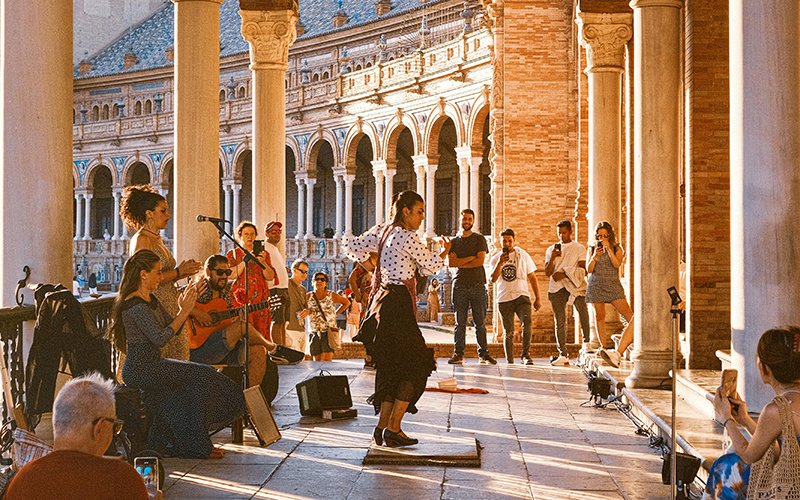
For those interested in music, Barcelona’s Primavera Sound and Glastonbury Festival in the UK are two of Europe’s most renowned music events. Primavera Sound attracts top international acts to its stunning seaside location, while Glastonbury combines music, art, and activism for an unforgettable festival experience.
Local events and festivals add a dynamic dimension to city breaks, allowing travellers to engage with the culture and traditions of a destination in a deeply personal way. Whether attending a centuries-old celebration or a modern music festival, these experiences provide unforgettable memories and a richer connection to the cities you visit. Make your next city break even more special by timing your trip with one of Europe’s iconic events.
Ease of Planning and Resources
One of the advantages of city breaks is how straightforward they are to plan compared to longer vacations. With the right resources and a little preparation, organizing a city break can be quick and stress-free, allowing you to focus on enjoying your time away. Whether you’re arranging a spontaneous weekend escape or a meticulously planned getaway, there are plenty of tools and tips to simplify the process.
Start by selecting your destination based on your interests, travel dates, and budget. Many European cities, such as Paris, Rome, and Barcelona, have a wealth of information available online, including official tourism websites, travel blogs, and guidebooks. These resources often provide insights into must-see attractions, local events, and insider tips for making the most of your visit.
Booking accommodations is another key step in planning a city break. Platforms like Booking.com, Airbnb, and Expedia allow you to compare prices, read reviews, and find accommodations that suit your preferences and budget. For last-minute trips, apps like HotelTonight can help secure great deals on short notice.
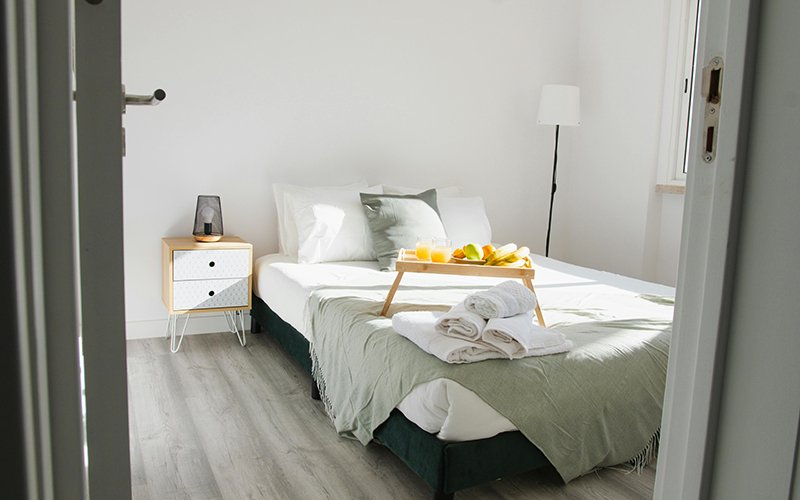
Transportation planning is also straightforward for most European city breaks. Many cities are well-connected by air, rail, and bus networks, making it easy to reach your destination. Budget airlines such as Ryanair and EasyJet offer frequent and affordable flights, while high-speed trains like the Eurostar and Thalys provide comfortable and eco-friendly travel options. Once in the city, public transportation systems, such as metro lines, buses, and trams, simplify getting around. Apps like Citymapper and Google Maps can help you navigate local transport with ease.
To make the most of your city break, consider purchasing a city pass or tourist card. Many cities, including London, Amsterdam, and Vienna, offer cards that bundle access to popular attractions, public transport, and discounts for restaurants or shops. These passes can save time and money, especially if you plan to visit multiple sites.
For those who prefer guided experiences, booking tours in advance can ensure a seamless itinerary. Websites like GetYourGuide and Viator offer a range of options, from walking tours to day trips. These platforms often include user reviews, allowing you to choose tours that best fit your interests.
Packing efficiently is essential for short trips. A small carry-on suitcase or backpack is usually sufficient, especially if you’re traveling light. Check the weather forecast for your destination and pack accordingly, including comfortable shoes for exploring. Travel organizers, such as packing cubes and toiletry bags, can help keep your essentials organized and accessible.
Ease of planning and access to helpful resources make city breaks one of the most convenient travel options. By leveraging online tools, booking platforms, and travel apps, you can organize a memorable trip with minimal hassle. With everything planned and ready, you can focus on immersing yourself in the sights, sounds, and experiences of your chosen city.
Conclusion and Final Thoughts: Our Verdict
City breaks offer the perfect opportunity to explore Europe’s diverse and vibrant destinations, each brimming with unique experiences. Whether you’re drawn to the iconic landmarks of Paris and Rome, the tranquil charm of Bruges and Ljubljana, or the adventure opportunities in Reykjavik and Innsbruck, there’s a city break to suit every type of traveler.
From savoring local cuisine and discovering cultural treasures to enjoying festivals and immersing yourself in history, city breaks are about creating unforgettable memories in a short amount of time. With modern planning tools, eco-conscious travel options, and a wealth of activities at your fingertips, city breaks are more accessible and rewarding than ever.
By considering factors like accessibility, affordability, and the atmosphere of your chosen destination, you can craft a getaway that aligns perfectly with your interests and travel style. Whether it’s a romantic escape, a family-friendly adventure, or a solo exploration of hidden gems, city breaks promise something special for everyone.
So, why wait? Start planning your next city break today and experience the magic, culture, and excitement of Europe’s finest cities. Pack your bags, charge your camera, and prepare to fall in love with the unique vibes of each destination. Your perfect city break adventure is just a few clicks away.
- Accessibility
- Affordability
- Cultural Experiences
- Food and Drink
- Accommodation Options
- Activities and Attractions
- Weather and Best Travel Seasons
- City Atmosphere and Vibes
- Sustainability and Eco-Friendliness
- Romantic Appeal
- Family-Friendliness
- Adventure Opportunities
- Historical and Architectural Highlights
- Local Events and Festivals
- Ease of Planning and Resources
- Conclusion and Final Thoughts: Our Verdict

